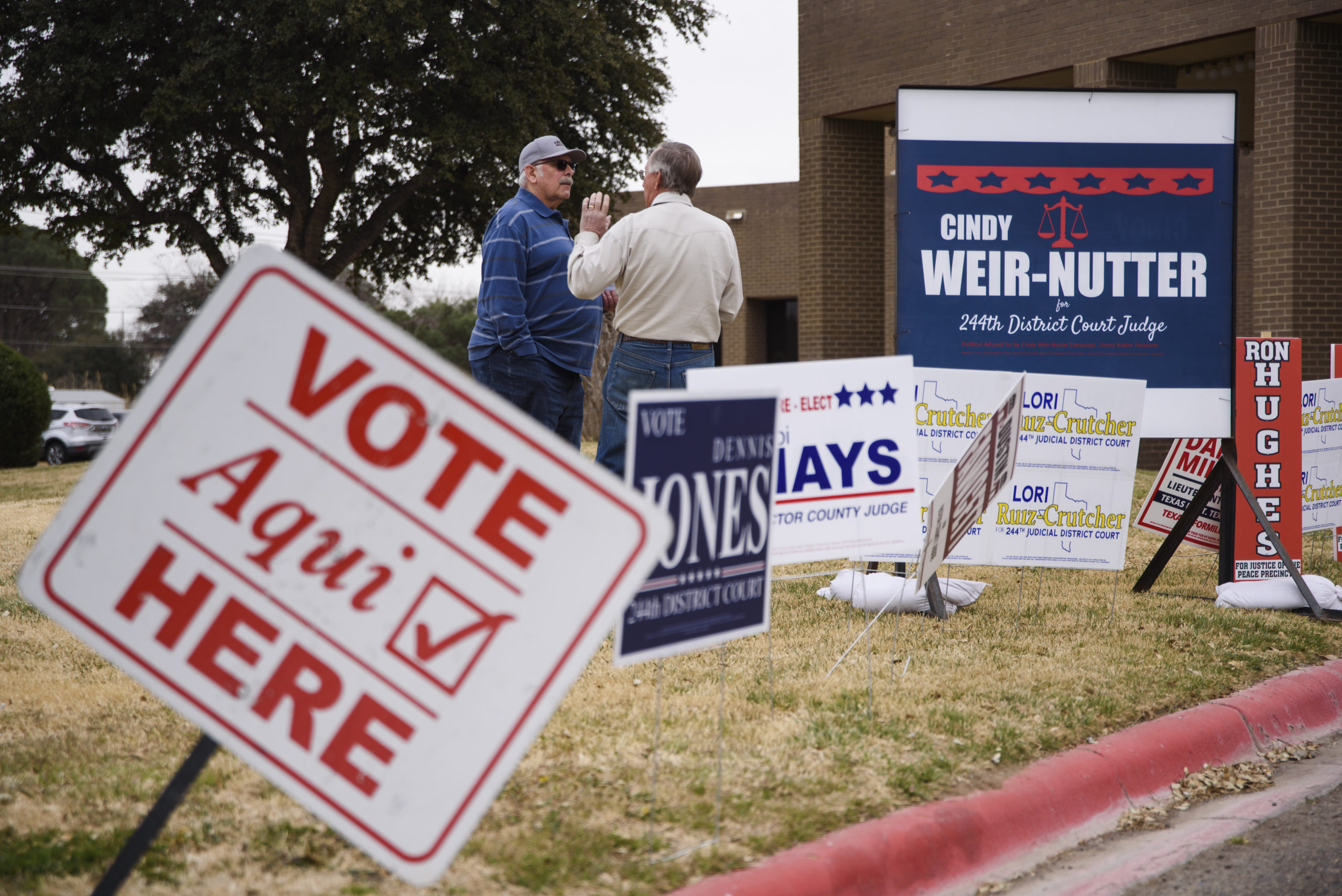
Texas Democratic Voter Participation Dipped in Primaries, GOP Voter Turnout Increased Slightly
Turnout was slightly down among Democrats from the 2018 gubernatorial primary, while Republican turnout increased by 1.5 percent.

Midterm primaries usually don’t rally voters to the polls in the same measure as other elections. True to form, voter turnout for Texas’ “first-in-the-nation” primaries followed this already established trend.
Unofficial results show 11.63 percent of the state’s registered voters cast ballots in the Republican primaries, according to the Texas Secretary of State’s office. On the Democratic side, 6.69 percent of registered voters cast ballots. In the 2018 midterm primary election, 10.16 percent of registered voters cast ballots in the GOP primary while 7.01 percent did so on the Dem side.
That means the Democratic contests this March drew a slightly smaller portion of Texas’ registered voters than in 2018, while the GOP’s share rose slightly. The Republican edge over Democrats in total votes grew by a couple hundred thousand compared to the prior midterm.
But the relatively small drop in primary turnout for Democrats raises questions about whether a new restrictive voter law kept at least some people in Texas from casting ballots—and whether it will have a bigger impact in the general elections in the fall.
In September, Governor Greg Abbott signed into law SB 1, a slew of voter restrictions that banned drive-thru voting, prohibited 24-hour and overnight voting, and added identification requirements for Texans voting by mail. Voting rights groups have assailed the law as a thinly veiled attempt to suppress the vote.
MOVE Texas, a voting rights advocacy group, organized protests and testified in the Capitol against the bill. The organization’s leaders have argued that the barriers and punitive measures the law enacted could prevent more Texans from voting if they are unclear about requirements and that voter education is badly needed.
“Senate Bill 1 is law and it has not only failed to ‘restore confidence’ in our elections, but has broadcast to the nation how woefully incapable current Texas leadership is of educating Texans on voting procedures,” said Charlie Bonner, MOVE Texas communications director.
Jeff Blaylock from Texas Election Source found that the number of registered voters who did not turn out to vote in the 2022 midterm primaries broke the previous record, set in 2018, by nearly 1.5 million non-voters.
But this fact can not be used as definitive proof that the law deterred voters from casting their ballots, Blaylock said. It’s actually part of a long-term trend: The number of nonparticipating voters has been steadily rising in Texas since 2008. “The thing about these numbers is, however you look at them, you can draw your own conclusion as to your own desire and conclusion as to whether you think that voter turnout is hurt by these laws or helped or not affected at all,” Blaylock said.
Blaylock said it will be more telling to see how many people tried to vote by mail and had their ballots rejected—information that won’t be available for at least another week.
The legislature also heavily regulated mail-in voting. Officials in some counties, including Travis and Harris, reported that they rejected up to 40 percent of applications.
So far, counties reported 241,198 mail-in ballots to the Secretary of State, however, Harris County discovered it hadn’t counted up to 10,000 mail-in ballots this week. These uncounted ballots could swing the results for state representatives’ seats and the Democratic race for attorney general.
In assessing the primary turnout, Rice University political science professor Mark P. Jones attributes part of the drop to how the Republican-controlled legislature redrew the state’s districts last year to be far less competitive.
Redistricting has minimized how many truly competitive districts there are, undermining voters’ interest in participating, he said. Jones predicts that there will only be one or two truly toss-up districts for U.S. congressional seats in Texas this November. He noted that as recently as 2020, 12 of the state’s 36 districts were competitive between the two parties.
“It’s important to keep in mind that electoral laws actually have a pretty modest impact on overall turnout, compared to other factors such as competitive campaigns and get-out-the-vote efforts, mobilization, media coverage, and such,” Jones said.
Jones said that for voters, many elections have become like “watching a soccer match or football game where one team’s winning by a tremendous margin. There’s not much reason to watch, other than just you really like to watch or you like the team, but if it’s competitive, people want to participate in it.”
Many more people vote during a presidential election year. In the 2020 primary, more than a quarter of registered Texans participated. To boost turnout in a midterm year, Jones said both Texas state and county officials would need to make significant efforts.
“The state of Texas has a tendency to throw voters in the deep end when it makes changes to the election laws,” Jones said. “But it doesn’t engage in any robust education campaign, to educate the voters about the changes so that they don’t have problems when they try to vote.”



